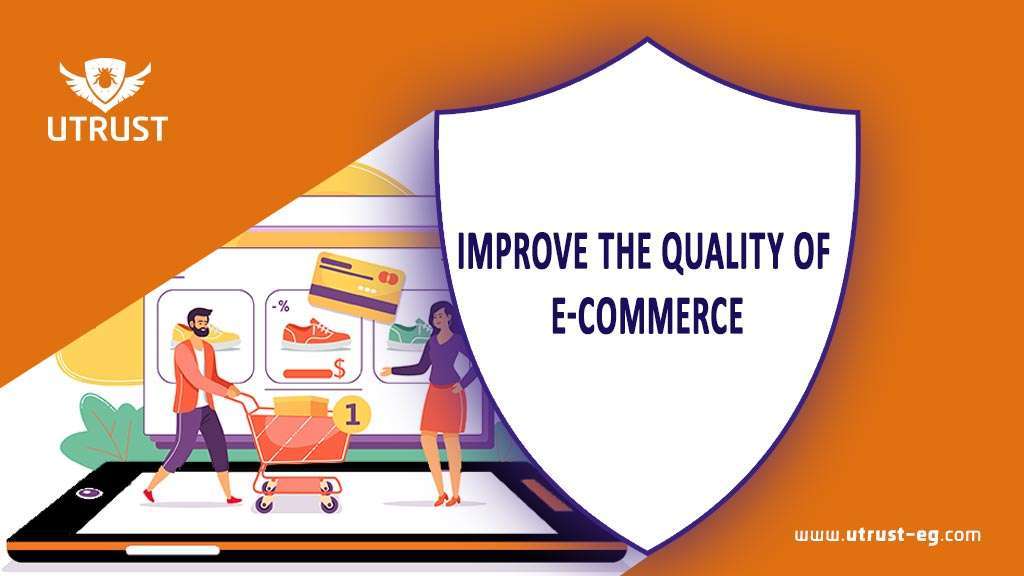Ecommerce, also known as online shopping, is the process of buying and selling goods and services over the internet, using modern technology to facilitate and speed up business transactions between sellers and buyers. E-commerce is considered a modern form of commerce that has grown significantly in recent years.
E-commerce has many advantages, including:
- Convenience and ease of use: Buyers can easily search for products and services they desire and obtain them without leaving their homes or offices.
- Global reach: Companies engaged in e-commerce can reach their customers anywhere in the world, expanding their customer base.
- Cost savings: E-commerce allows companies to save on rent and operating costs associated with traditional stores.
- Digital marketing: E-commerce enables companies to use digital marketing tools such as targeted advertising and email marketing, which can help increase revenue.
Some of the challenges facing e-commerce include:
- Security and protection: Companies must secure customers’ personal and financial information from cyberattacks and electronic threats.
- Service quality: Companies must provide excellent customer service, respond quickly to customer inquiries and issues, and ensure the provision of high-quality products.
- Design and user experience: Companies must provide a comfortable and attractive user experience and design an easy-to-use website.
Overall, e-commerce is an important part of modern life and one of the most prominent trends in the business world. It is expected to continue to evolve and thrive in the future with further technological advancements and new innovations.
To improve the quality of e-commerce websites and smart applications and overcome these challenges, some guidelines and best practices can be followed, including:
- Designing an easy-to-use website that allows users to easily navigate between pages and search for products.
- Providing a comfortable and seamless user experience on the website or smart application by using user experience techniques and designing the front-end interface in a user-friendly way.
- Improving the loading speed of the website or smart application using fast content loading techniques and reducing the size of large images and files.
- Providing security and protection for users and their personal data by encrypting communications using approved security protocols.
- Improving the quality of product images and providing accurate descriptions of the products displayed to attract more customers and improve their experience.
- Providing multiple payment and shipping options to meet different customer needs.
- Providing excellent customer service that can meet customer needs and respond quickly and efficiently to their inquiries.
- Using various electronic marketing techniques, such as targeted advertising and data analytics, to increase traffic and improve revenue.
- Using data analytics techniques to understand user behavior and improve their experience on the website or smart application.
- Regularly updating the website or smart application and improving performance to meet new technology updates and improve the quality of products and services offered.
Integrating with electronic payment gateways with e-commerce requires ensuring a high level of security. To achieve this, the following steps can be taken:
- Use a secure payment gateway: Make sure to use a reliable and secure payment gateway with an SSL/TLS certificate that encrypts the connection between the website and the customer to prevent breaches.
- Ensure compliance with security standards: Verify that the website complies with different security standards, such as PCI DSS, to protect customers’ sensitive data.
- Use strong passwords: Use complex and strong passwords that are changed regularly and avoid using the same passwords for other websites.
- Provide multiple payment options: Offer various payment options such as credit cards and e-wallets to meet different customer needs.
- Verify the link’s validity: Check the validity of the link used for payment to avoid accessing insecure websites.
- Do not store sensitive information: Avoid storing sensitive information such as credit card numbers and security codes on local servers of the e-commerce website.
- Use security and protection services: Use various security and protection services such as anti-malware and penetration testing to improve security.
- Keep the system and software up to date: Regularly update the system and software used to reduce the risk of breaches and improve security.
- Comply with laws and regulations: Adhere to local and international laws and regulations related to data protection and e-commerce.
In case of a suspected breach, the following steps should be taken as soon as possible to ensure protection and minimize potential damages:
- Cut off the connection: Disconnect from the network associated with the website or application suspected of being breached to prevent the spread of the breach.
- Change passwords: Change all passwords associated with the website or application suspected of being breached to improve security.
- Report the incident: Report the incident to relevant parties, such as electronic payment providers and law enforcement agencies specialized in combating cybercrime.
- Assess the damage: Evaluate potential damages to determine the necessary measures to deal with the situation.
- Verify the quality of protection: Check the quality of protection used by the website or application suspected of being breached to improve security.
- Update the system and software: Update the system and software used to improve security and prevent future breaches.
- Train and educate: Train employees and users on security standards and raise awareness about the dangers of cyber breaches to improve security and minimize potential damages.
In summary, by following these best practices, e-commerce websites and smart applications can improve their quality, enhance the user experience, increase revenue, and ensure a high level of security when linking electronic payment methods.
Comments are closed.





